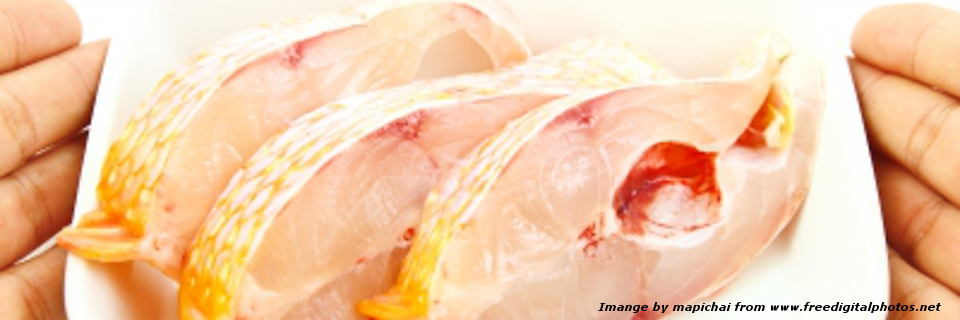Scientific and technical assistance on the evaluation of the temperature to be applied to pre-packed fishery products at retail level.

14/12/2015
Following a request from the European Commission, EFSA was asked to deliver a scientific report providing scientific and technical assistance on the evaluation of the temperature to be applied to pre-packed fishery products gutted or entire, including some parts of them. The current EU rules for transport or storage conditions of fishery products do not define a specific temperature to be respected but refer to ‘temperature approaching that of melting ice'. Regulation (EC) No 853/2004, Annex I, defines fresh fishery products as unprocessed fishery products, whether whole or prepared, including products packaged under vacuum or in a modified atmosphere that have not undergone any treatment to ensure preservation other than chilling. The main temperature-dependent hazards identified are histamine formation, Listeria monocytogenes, Clostridium botulinum, and Yersinia enterocolitica. To assess bacterial growth and histamine production during storage and transport at retail level and to evaluate different storage scenarios, published predictive microbiology growth models were used assuming favourable growth conditions. The results from the modelling showed that pre-packed fresh fishery products can be stored at refrigeration temperatures above 0 °C (e.g. 3–5 °C) and be compliant with the current EU and international rules. Examples of combinations of product durability (maximum shelf-life) and packaging atmosphere that should enable compliance with the safety criteria for various storage temperatures at retail are provided.
The results of the modelling approach showed that histamine formation would be 100 ppm at the end of its shelf-life (lower limit m of the safety criterion in EU Regulation (EC) No 2073/2005). Thus, an equivalent condition to this baseline scenario is any combination of storage temperature, shelf-life and CO2 concentration in the package that leads to histamine formation of 100 ppm at the end of shelf-life. For example, for a retail temperature of 3 °C, 100 ppm would be reached under the following conditions: (1) a shelf-life of 6 days and 0 % CO2 in the packaging headspace, (2) a shelf-life of 7 days and 20 % CO2 in the packaging headspace, or (3) a shelf-life of 8 days and 40 % CO2 in the packaging headspace.
For L. monocytogenes EU Regulations set a limit of 100 colony-forming units (CFU)/g in ready-to-eat products. For this, the available predictive models show that, for a retail temperature of 3 °C for example, this limit would be respected with: (1) a shelf-life of 11 days and 0 % CO2 in the packaging headspace, (2) a shelf-life of 14 days and 20 % CO2, and (3) a shelf-life of 18 days and 40 % CO2.
For Y. enterocolitica the results of the modelling showed that at 0 °C are, for example: (1) a shelf-life of 10 days at 2 °C, (2) a shelf-life of 7 days at 4 °C, or (3) a shelf-life of 5 days at 6 °C.

